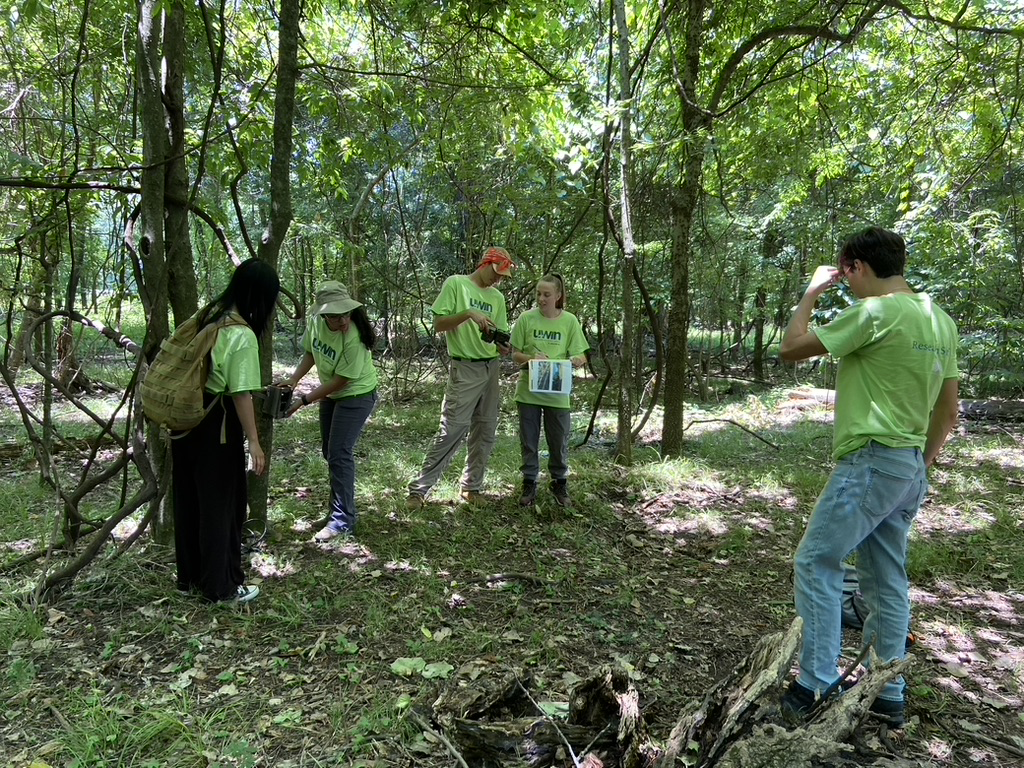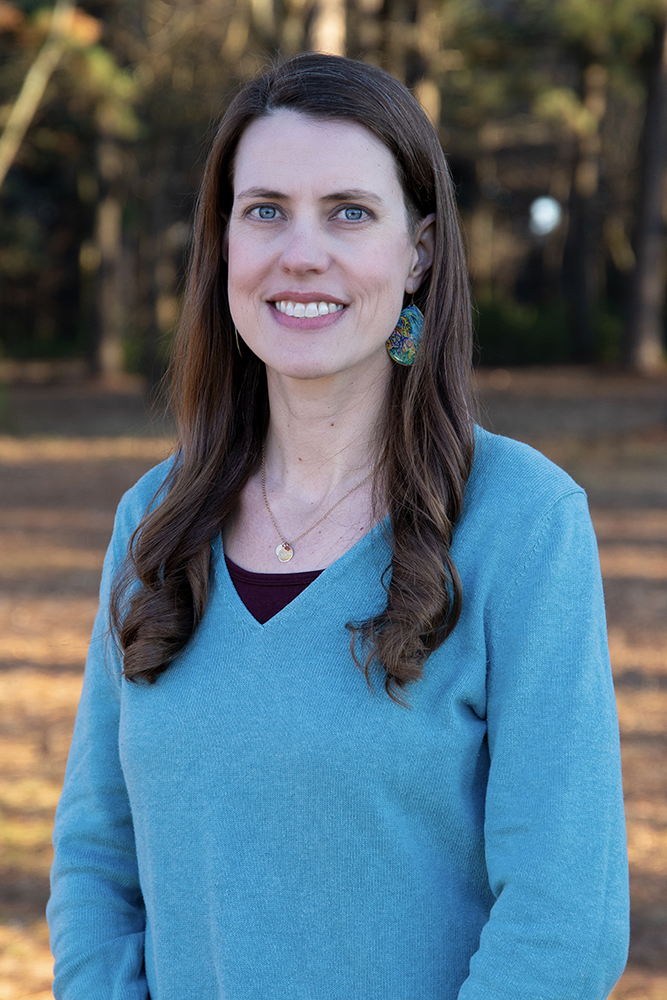Maureen McClung ’01 shares student involvement, potential
implications of research

ABOVE: Game camera maintenance by Hendrix students was crucial to the data
gathering process. / Photo courtesy Maureen McClung
CONWAY,
Arkansas (June 25, 2024)—Hendrix College Associate Professor of Biology Dr.
Maureen McClung ’01 is part of a team-authored research paper published in Proceedings
of the National Academy of Sciences (PNAS). The findings focus on gentrification’s
effects on urban wildlife and rely on research that involved a team of Hendrix
students.
The paper
was published by members of the Urban
Wildlife Information Network (UWIN), which initially consisted only
of cities in the U.S., but now has international members. Hendrix and the Arkansas
Game & Fish Commission (AGFC) represent the Little Rock node.
“Hendrix
is a really big piece of making the Little Rock node of this work, work,” says
McClung, who heads up the student team of researchers. She was approached by
the Research Division of AGFC based on the success of past collaborations
between the Commission and the College. The long-term
project was launched in 2020 and the paper’s data come from the years 2020 and
2021. The research is now receiving coverage in
national publications including The Hill and Eureka Alert!, a publication of the American
Association for the Advancement of Sciences.
“Basically,
it’s a long-term monitoring project where we place motion-triggered game
cameras in Little Rock parks,” she said. The Hendrix team is responsible for
maintaining the cameras – making sure they’re operating properly, downloading
the data, and identifying the species in the photos. Funding to support student
involvement came from the Judy and Randy Wilbourn Odyssey Professorship, which
McClung currently holds. Support also came from the Mosely and Sutton endowed grants,
which fund undergraduate biology research.
“There’s
no way this could happen without Hendrix students,” she said. “This is a
significant amount of work, and funding students through Odyssey in the summer,
providing fuel for the driving they do to all the different camera sites, it
all makes a difference.”
McClung
said six of these students presented recently at the Arkansas Academy of
Science using the research they’ve done for this project.
“All
these data that have been generated from our Little Rock project goes into this
larger network, and that’s where the analyses at these really large scales
happen,” she said. “These large data sets can be used to ask really powerful
questions,” such as how disenfranchisement of communities not only impacts
people by pricing them out of where they can live, but also changes how they
experience nature. Communities that have been gentrified have more wildlife biodiversity,
which has been shown to contribute to ecosystem function and human well-being.
“We’re
doing science that has social implications,” said McClung, who currently chairs
the College’s environmental studies program. “Their boots on the ground, their
Saturdays that they give up, have an impact in answering really important
questions.”
 Dr. McClung says that future
projects may build on these data: “We can ask all the questions we want with
our own data that we’ve gathered,” she said. “We just have to design a project
and request the data through the network.”
Dr. McClung says that future
projects may build on these data: “We can ask all the questions we want with
our own data that we’ve gathered,” she said. “We just have to design a project
and request the data through the network.”
“It’s been a really productive project in terms of
engaged learning experiences,” McClung said, adding that so far, 20 students
have earned Hendrix Odyssey Program Undergraduate Research credit for working
on the project and presenting their research in some public format, mainly at
scientific conferences. McClung credits the AGFC’s project coordinator,
Kimberly Sparks, and her colleagues Chris Middaugh and Kirsten Bartlow with
creating an experience that benefits both the research and the students.
“AGFC supplies the cameras and the gear and
coordinates so much of this project. It wouldn’t work without them,” she said. “Also,
students have gained exposure to state agency work, made career connections,
and gotten to dip their toes into the world of wildlife research – all while
staying local, which is really nice.”
The paper is currently available behind a paywall; to
view it in full, contact McClung at mcclung@hendrix.edu.
About Hendrix College
Founded in 1876, Hendrix College is
featured in Colleges That Change Lives: 40 Schools That Will Change the Way You
Think About Colleges and celebrated among the country’s leading liberal arts
colleges for academic quality, engaged learning opportunities and career
preparation, vibrant campus life, and value. The Hendrix College Warriors
compete in 21 NCAA Division III sports. Hendrix has been affiliated with the
United Methodist Church since 1884. Learn more at www.hendrix.edu.
“… Through engagement that links the classroom with
the world, and a commitment to diversity, inclusion, justice, and sustainable
living, the Hendrix community inspires students to lead lives of
accomplishment, integrity, service, and joy.”
—Hendrix College Statement of Purpose